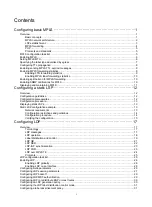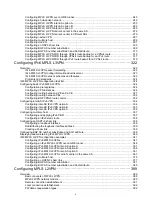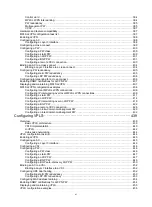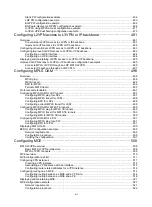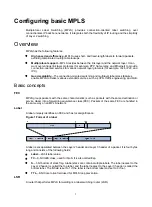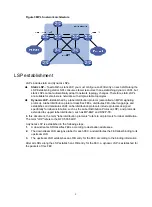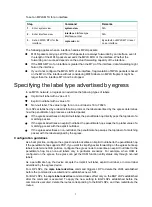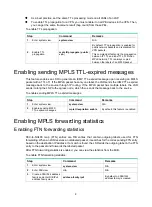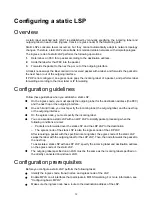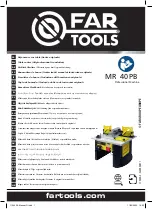
3
Figure 3 MPLS network architecture
LSP establishment
LSPs include static and dynamic LSPs.
•
Static
LSP
—To establish a static LSP, you must configure an LFIB entry on each LSR along the
LSP. Establishing static LSPs consumes fewer resources than establishing dynamic LSPs, but
static LSPs cannot automatically adapt to network topology changes. Therefore, static LSPs
are suitable for small-scale networks with simple, stable topologies.
•
Dynamic
LSP
—Established by a label distribution protocol (also called an MPLS signaling
protocol). A label distribution protocol classifies FECs, distributes FEC-label mappings, and
establishes and maintains LSPs. Label distribution protocols include protocols designed
specifically for label distribution, such as the Label Distribution Protocol (LDP), and protocols
extended to support label distribution, such as MP-BGP and RSVP-TE.
In this document, the term "label distribution protocols" refers to all protocols for label distribution.
The term "LDP" refers to the RFC 5036 LDP.
A dynamic LSP is established in the following steps:
1.
A downstream LSR classifies FECs according to destination addresses.
2.
The downstream LSR assigns a label for each FEC, and distributes the FEC-label binding to its
upstream LSR.
3.
The upstream LSR establishes an LFIB entry for the FEC according to the binding information.
After all LSRs along the LSP establish an LFIB entry for the FEC, a dynamic LSP is established for
the packets of this FEC.



